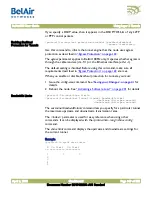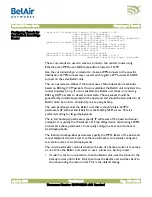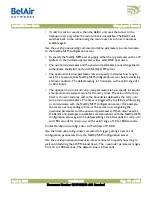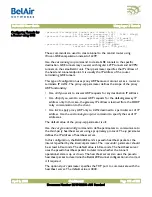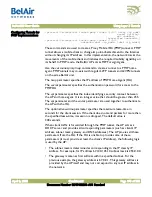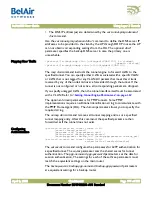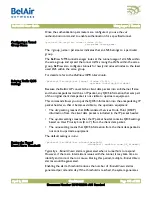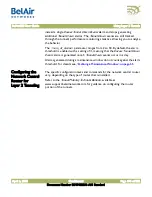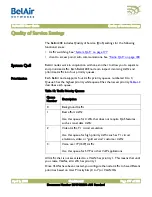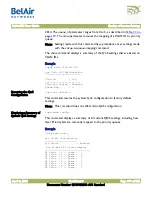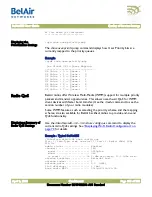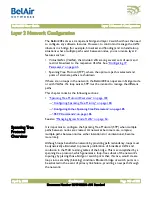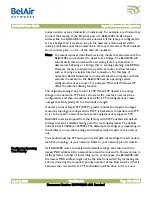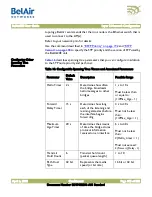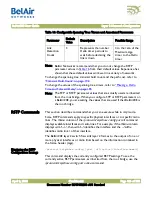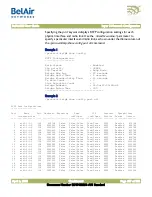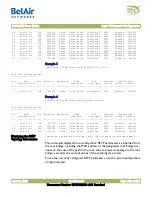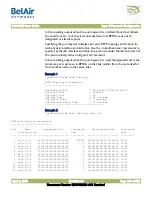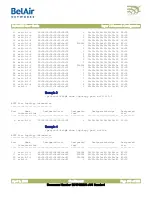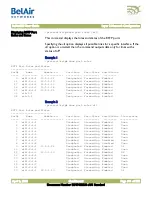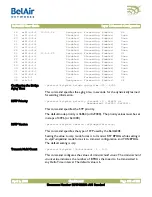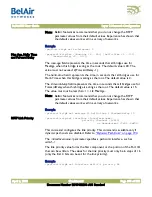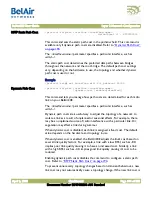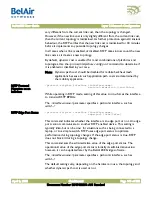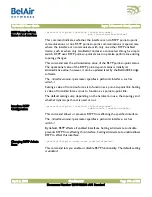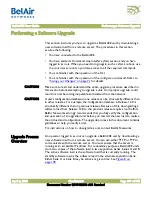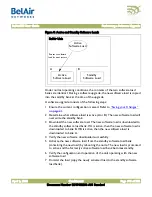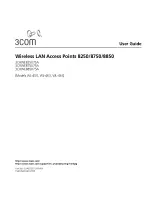
BelAir20E User Guide
Layer 2 Network Configuration
April 2, 2012
Confidential
Document Number BDTM02201-A01 Standard
Layer 2 Network Configuration
The BelAir20E acts as a transparent bridge and layer 2 switch without the need
to configure any software features. However, to control and manage the traffic
inherent in a bridge (for example, broadcast and flooding) and to handle loop
situations where multiple paths exist between nodes, you can invoke layer 2
features such as:
• Virtual LANs (VLANs), that divide traffic among several sets of users and
restrict broadcast to the respective VLANs. See
• Spanning Tree Protocol (STP), where the optimum path is selected and
ports of alternate paths are shutdown
If there are no loops in the network, the BelAir20E can operate in bridge mode
or with VLANs. If a loop exists, STP must be invoked to manage the different
paths.
This chapter contains the following sections:
•
“Spanning Tree Protocol Overview” on page 183
—
“Configuring Spanning Tree Priority” on page 184
—
“Configuring Other Spanning Tree Parameters” on page 185
—
See also
“Managing Egress Node Traffic” on page 64
.
Spanning Tree
Protocol
Overview
It is important to configure the Spanning Tree Protocol (STP) when multiple
paths between nodes are created. As networks become more complex,
multiple paths between nodes, either intentional or unintentional, become
more likely.
Although loops benefit the network by providing path redundancy, loops must
be dynamically eliminated to prevent proliferation of broadcast traffic and
confusion in the MAC learning tables of the bridge. This is accomplished by a
spanning tree protocol, which generates a loop-free subset of the network's
topology by placing those bridge or switch ports that, if active, would create
loops into a standby (blocking) condition. Blocked bridge or switch ports can
be activated in the event of primary link failure, providing a new path through
the network.

